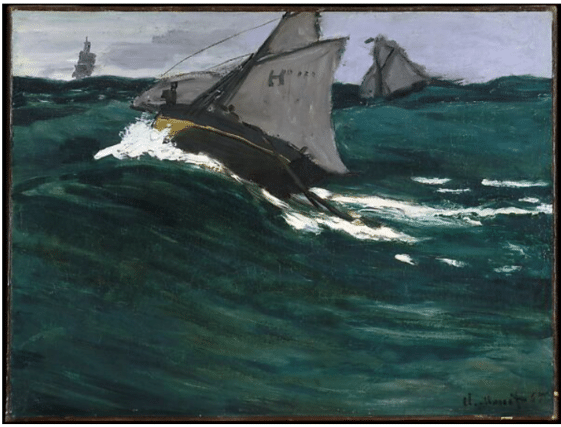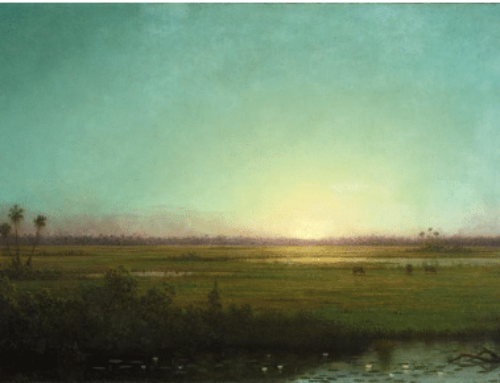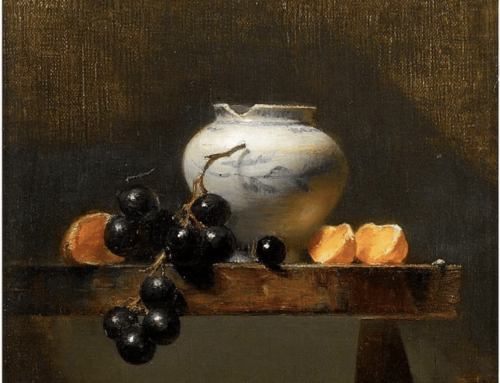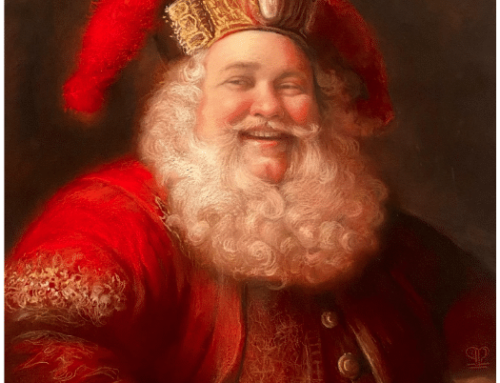When Monet’s early seascape, “The Green Wave,” debuted at the 1879 Impressionist exhibition, a critic called out Monet for being “directly influenced by Manet.” He had a point.
Eduard Manet pioneered the same flattening of the picture plane, the sharp edges, stark contrasts, and selective black outlining we also see in the Metropolitan Museum’s “The Green Wave.” The color, the handling of paint, and the composition, especially the high horizon line, echo Manet’s depictions of American warships, The “Kearsarge” at Boulogne (1999.442) and The Battle of the “Kearsarge” and the “Alabama,” (below) which Monet may have seen on exhibition in Paris in 1865 and 1867.
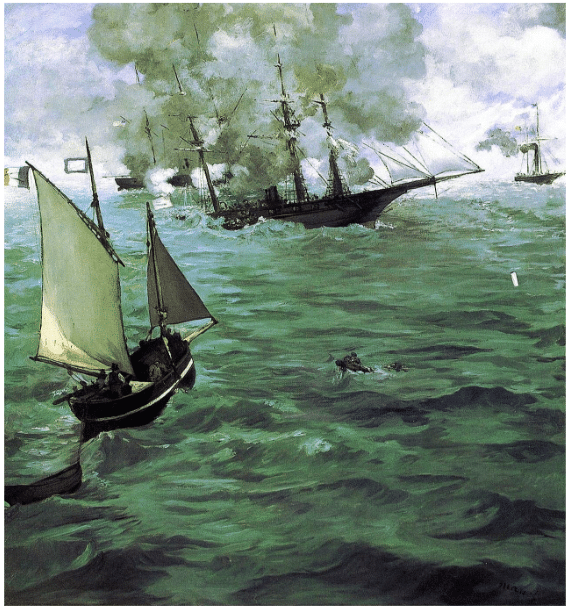
Edouard Manet, “The Battle of the Kearsarge and the Alabama,” 53 in × 50 in, Philadelphia Museum of Art, PA. (1864)
However, despite appearances, Monet’s “Green Wave” is nothing like Manet’s green-tinted seascapes in conception or overall impact. It’s a remarkably direct, hard-edged painting for Monet, and it stands out from the rest of his work. If anything, it seems to anticipate the existential seascapes of Homer, especially “Gulf Stream” also owned by the Met.
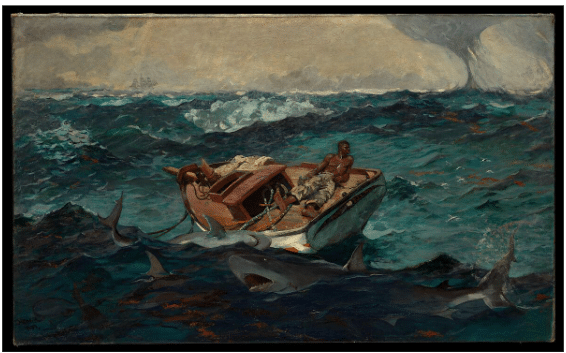
Both the Monet and the Homer make an impact by foregrounding a single tilting vessel beneath a dizzyingly high horizon line over an agitated, swelling sea. However, there is far more going on under the surface, as it were, in Homer’s painting, as the Met Museum explains:
“In Homer’s epic saga set along the Gulf Stream, a Black man faces his possible demise on the deck of a distressed boat while threatened by sharks and a waterspout. This painting is the culminating expression of various deeply personal and universal themes that Homer explored across his career, particularly the conflict between humans and the natural environment.”
In an ominous sign, even though the lone sailor is safe for now, the ocean is rough and the boat as well as the water around it are already smeared and tinged with blood.
“Completed at the dawn of the twentieth century and during what historians have called the nadir of race relations in the United States, The Gulf Stream is also rich with geopolitical implications. Homer acknowledged the expanded imperial ambitions of the United States beyond North America with the addition of key elements: Splayed across the ship’s deck are stalks of sugarcane—the Caribbean commodity central to the economy of empire and directly linked to the swift ocean current of the title, which enabled its trade, and the devastating history of transatlantic slavery. Homer interweaves (evocations of) these complicated narratives in a painting that confronts human struggle, personified by a stoic survivor, against the relentless power of nature.”
Monet and Manet both loved their green seas for their own sake. There’s a quick way to mix your own marine green using just two colors and white.
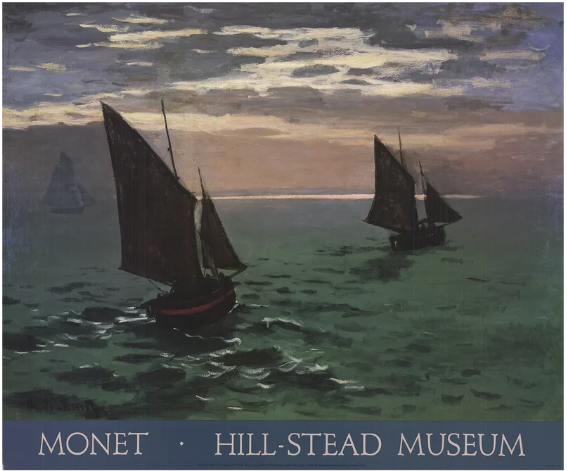
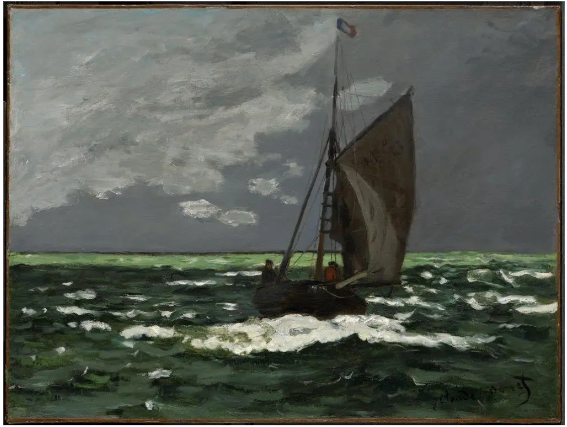
One way to mix a dusky sea green.
You can blend two unlikely colors, bright phthalo (or Prussian – doesn’t matter) blue and smoldering burnt umber (an earthy reddish brown) with white to create a credible grayish sea green (that you can brighten up with a little yellow for a green so marine you can almost hear the seagulls in Normandy as you paint with it).
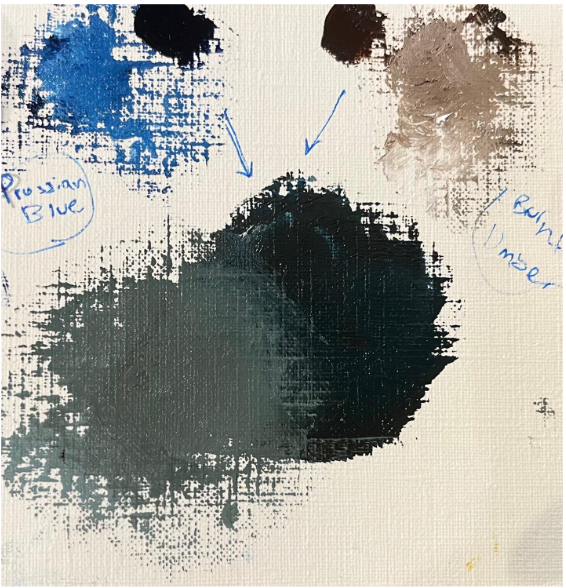
Prussian (or phthalo) blue mixed with burnt umber plus titanium white for a sea green.
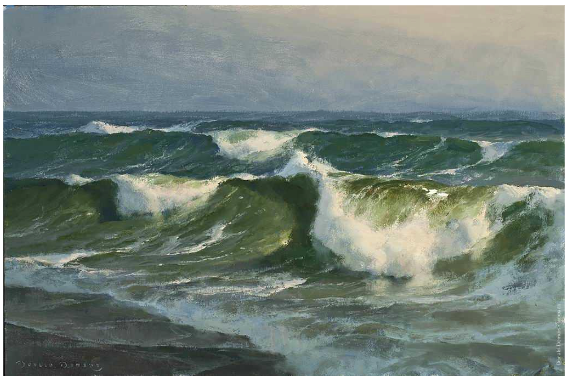
Seascape by Don Demers
Another painter who’s got the whole “sea of green” thing going on is Don Demers. Learn his method in his video DON DEMERS: MASTERING THE SEA.

